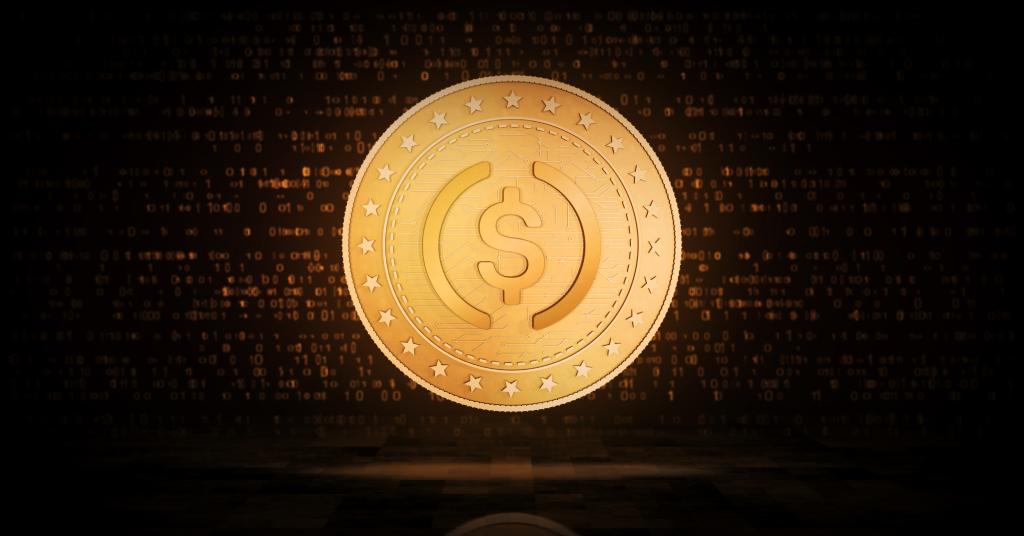Let’s analyse if they are really as stable as the name suggests

Are stablecoins really that stable? Source: depositphotos.com
Looking for stability in the modern financial world is tricky. Amidst the global turmoil, Bitcoin previously dubbed as the “digital gold” fell to its lowest level in 16 months. Even gold itself lost 1% of its value last week on expectations of a more aggressive Fed. Perhaps, stablecoins could become a new safe haven?
How stablecoins work
Stablecoin is a digital asset-backed by a more traditional financial investment tool that has a less volatile nature. Stablecoins can be pegged to any fiat currency, foreign-exchange-traded commodities, precious or industrial metals, etc. Some stablecoins are backed by other crypto assets.
The most popular stablecoins include Tether (USDT), USD Coin (USDC), Binance USD (BUSD), True USD (TUSD), Paxos Standard (PAX), etc.
There are a few basic mechanisms used to keep stablecoins stable.
Fiat backing
Fiat-backed stablecoins are backed at a 1:1 ratio, meaning 1 stablecoin is equal to 1 unit of a certain fiat currency. Fiat-backed stablecoins keep a reserve of the chosen currency as collateral. This reserve is administered through an independent custodian and audited on a scheduled basis to ensure compliance. When someone wants to redeem fiat money with their crypto coins, the custodian pays out the amount of fiat from their reserve. The equivalent stablecoins are then destroyed or taken out of circulation. Most of the fiat-backed stablecoins use US dollar reserves.
Euro and GBP are also emerging as collateral, with new stablecoins increasingly launched. For instance, the Lugh (EUR-L) – a new French euro-backed stablecoin anchored to euro reserves held in an account with Societe Generale – has been developed in a partnership between the Lugh Company and the crypto trading platform Coinhouse. In Germany, Bankhaus von der Heydt (BVDH) collaborated with Bitbond to launch a Euro stablecoin on the Stellar network. A few GBP-backed crypto projects like LBXPeg, TrueGBP, GBPX, or BGBP have started and closed during the last few years due to low demand.
Commodity backing
Any commonly valued commodity may become the solid backbone of a stablecoin. Physical assets like precious metals, oil, and real estate are used for this purpose, with gold being the most popular option. Holders of such stablecoins can either sell them for cash or redeem their tokens in exchange for the real underlying gold. At the same time, stablecoins backed by other commodities such as oil or real estate often lack the same utility. They can be redeemed for tokens in the monetary value of the pegged item rather than a physical barrel of oil or a house. Diversified baskets of precious metals are also popular as collateral. Since commodities have the potential to appreciate in value over time, people are inclined to hold and use the related stablecoins.
The largest gold-backed stablecoin, Pax Gold or PAXG, has jumped 7.4% in 2022, while its main rival Tether Gold has grown by 8.5%.
Crypto backing
Stablecoins can use other crypto assets as collateral too. For example, Wrapped Bitcoin (WBTC) issued on the Ethereum blockchain is a stablecoin backed by Bitcoin. In this case, stablecoins remain much more decentralised than fiat-backed ones while still holding an intrinsic stability. Such tokens are often backed by multiple cryptocurrencies in order to distribute risk.
When purchasing this kind of stablecoin, the buyer locks the cryptocurrency into a smart contract to obtain tokens of equal representative value. You can then put your stablecoin back into the same smart contract to withdraw your original collateral amount. Since the scheme is quite complex, this type of stablecoin is not as popular as more traditional variants. Moreover, some crypto-backed stablecoins have been losing their peg during black swan events due to a lack of over-collateralisation. However, as the example of Dai shows, there’s great potential there.
Algorithm backing
These types of coins are non-collateralised. Instead, they use an algorithmically governed approach to control the stablecoin supply. This is a model known as seigniorage shares. Specialised algorithms and smart contracts reduce the number of crypto tokens in circulation when their market price falls below the price of the fiat currency they aim to correspond to. To the contrary, if the price of the token exceeds the price of the fiat currency it tracks, new tokens enter into circulation. Tokens stabilised by algorithms are not redeemable 1:1 for fiat currencies or gold. Their demand is driven by market sentiment and momentum. This way, the stability of algorithmic stablecoins is still questionable, being determined solely by collective market psychology.
Some projects which have taken this approach are Empty Set Dollar (ESD), Basis Cash, and Dynamic Set Dollar. They have all not been able to hold their peg for a long time. Another project of this kind is Tomb Finance. Its main product is an algorithmic stablecoin known as TOMB. it is pegged to Fantom (FTM) instead of a fiat currency. Since last September, the stablecoin has kept the peg pretty well.
How stable are they?
Fiat-backed stablecoins aim to correspond to the price of 1 USD or other reserve currency. In reality, it doesn’t always work out perfectly.
For example, Tether USDT fell as low as $0.85 in 2015 and fluctuated a lot in early years. However, since 2019, the stablecoin has managed to maintain its value between $0.99-$1. USDC has also had some volatility, falling to $0.92 at times. Nevertheless, in the long run, the stablecoin equaled $1, as promised.
Another point is that the USD itself is not always perfectly stable. Like any other fiat currency, the dollar’s relative value depends on economic activity and the geopolitical outlook of the United States. If the demand for the dollar increases, then so does its value. Conversely, if the demand decreases, so does the value. Besides, you should factor inflation in. If it’s high, the purchasing power of the currency falls.
Commodity-backed stablecoins may be stable in terms of the attached value in gold, oil or property. However, the price of these assets also fluctuates from time to time. E.g the price of oil sharply fell as consumption levels minimised in 2020. In fact, the price went negative (-$37) for the first time on record. Real estate often changes in price depending on external factors.
Gold, in this respect, is relatively reliable. At least, it always holds value, no matter the economic situation. This way, gold-backed stablecoins remain a digital variant of a traditional safety net. At the same time, annual changes (both negative and positive) in gold prices may reach up to 28%.
As for the crypto-backed stablecoins, pegging to BTC is not really a brilliant example of stability. The crypto pioneer has lost more than 37% of its value so far this year, falling to almost $26,000 – the lowest price since 2020. Just six months ago, Bitcoin was hitting an all-time high around $69,000.
Two algorithmic stablecoins, Terra (UST) and its sister currency Luna, have also recently collapsed, losing 95% of their value. Blockchain analytics firm Elliptic estimates that holders of UST and Luna have lost a total of $42 billion over the past week.
Terra was ranked among the 10 most valuable cryptocurrencies and peaked at almost $120 (€115.28) last month. UST relied on a complex set of code, coupled with a floating token called Luna, to balance supply and demand and stabilise the price.
The biggest reason why most people held Terra UST was because of the Anchor Protocol – kind of a crypto savings account, that used to pay 20% interest. This March, Anchor passed a resolution to replace the 20% rate with a variable rate. Traders started selling their Terra UST and Luna tokens, and burning UST in exchange for Luna. The supply of Luna ballooned, causing the price to plummet. Thus, the balancing mechanism stopped functioning.
Previously, Terra’s creator Do Kwon purchased $3.5 billion (€3.3 billion) worth of Bitcoin to support Terra UST in the event of a crisis. Not only had Kwon’s Luna Foundation Guard accumulated a total of more than 80,000 Bitcoins, but also they had supplies of other tokens including BNB, tether, USDC and avalanche. Kwon had promised to use Bitcoin in the event of a dramatic fall in the value of UST.
In a series of tweets, the foundation revealed it had sold a large part of its Bitcoin in futile attempts to bring UST back on track. That sent ripples across all crypto markets. As of Monday, Luna Foundation Guard had just 313 Bitcoins left in its reserve, worth approximately $9.3 million. The firm said it would use the remainder of its $85 million in crypto assets — including some BNB and avalanche — to “compensate remaining users” of UST.
SEE ALSO:









